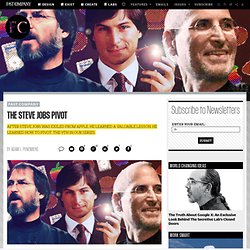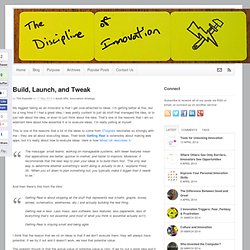

Twitter Shifts from Tech Startup to Media Network [Infographic] InShare99 The state of the relationship between Twitters and its developer community is nothing short of tumultuous.
![Twitter Shifts from Tech Startup to Media Network [Infographic]](http://cdn.pearltrees.com/s/pic/th/twitter-startup-infographic-40804165)
While there are significant merits on either side of the debate, what’s clear is that the Twitter of yore is no longer on a similar course for what will be the Twitter to come. It’s a sign of maturation and focus. It’s Twitter’s shift from tech startup and media darling to an aspiring new media empire. Ruffling feathers and clipping wings is an unfortunate reality of any business strategy. What was once a Twitter paradox has now become promising new model for the future not just social and mobile media, but all media. As Twitter makes the pivot to a fledgling media giant, the teams at “Pivot” and Netbase studied how online conversations reflected the sentiment of the community toward Twitter. So how does that 30% break out?
Well, 30% are general complaints. 22% reflect changes to the API rules. 16% are tied to DM. 33% complain that an app can’t post. See you there! The Steve Jobs Pivot. Over the course of Fast Company’s Pivot series I’ve covered ad firms, media startups, retailers, search engines, dating sites and even musicians that have been forced to either change direction or face dire consequences.

This week, though, I want to focus on just one man: Steve Jobs. Because like virtually everything else Jobs did, he turned pivoting into an art form. One of the fundamental tenets of pivoting comes out of Eric Ries' Lean Startup methodology. The founder of a startup doesn’t simply tear up a business plan if things aren’t going well. Pivoting is borne out of data, of looking at what is working and what isn’t.
All of this is marvelously chronicled in “The Lost Steve Jobs Tapes” by Brent Schlender, who recently dug up a trove of recorded interviews he had conducted with Jobs over the years. The speed of today's well-funded startups is brutal. But it does allow for change in direction. Like most entrepreneurs Steve Jobs didn’t have a crystal ball. Wayfair: Your Online Mega-Pivot Megastore. When you head a startup, you can pivot until you get where you need to go, but when you run a successful company you have a lot more to lose.

Actually, the difference between nursing a startup and running a successful company is a bit like the difference between being married and being married with children. The deeper your commitment, the harder it is to make abrupt changes. Or as comedian Louis CK observed, “When you get married, you go, ‘Holy Shit! I can’t leave now.’ I mean, I wasn’t thinking of leaving, but now I really can’t leave.
Which leads me to this week's pivot. While Shah and Conine knew sallying forth with sword drawn to do battle with Amazon was, at best, a long shot and, at worst, startup suicide, they recognized ample opportunity in niche ecommerce, which, while growing at 20% to 30% a year, still flew under the radar. The speed of today's well-funded startups is brutal. But it does allow for change in direction. There were substantial risks. Live Chat: When to Pivot, When to Persevere With Your Business Idea - In Charge.
Today’s entrepreneurs are nimble, often spotting changing market conditions just as their business ideas are coming to fruition.

Today’s Wall Street Journal spotlights cases when Pivoting Pays Off for Tech Entrepreneurs. When should you change course to synch with the new circumstances, and when should you hold true to your business plan? Steve Blank co-author of “The Startup Owner’s Manual,” joined eight start-ups since arriving in Silicon Valley in 1978, and now teaches entrepreneurship. He took reader questions on April 26, joined by WSJ’s small business editor Vanessa O’Connell. Read the full transcript. Hi, We’re looking forward to the live chat, which will begin in less than ten minutes. 'Pivoting' Pays Off for Tech Entrepreneurs. Build, Launch, and Tweak. My biggest failing as an innovator is that I get over-attached to ideas.

I’m getting better at this, but for a long time if I had a great idea, I was pretty content to just do stuff that managed the idea, or to just talk about the idea, or even to just think about the idea. That’s one of the reasons that I am so adamant here about how essential it is to execute ideas. I’m really yelling at myself. This is one of the reasons that a lot of the ideas to come from 37signals resonates so strongly with me – they are all about executing ideas.
Their book Getting Real is ostensibly about making web apps, but it’s really about how to execute ideas. The message: small teams, working on manageable systems, with fewer features mean that applications are better, quicker to market, and faster to improve. And then there’s this from the intro: I think that the reason that we sit on ideas is that if we don’t execute them, they will always have potential.